Menu
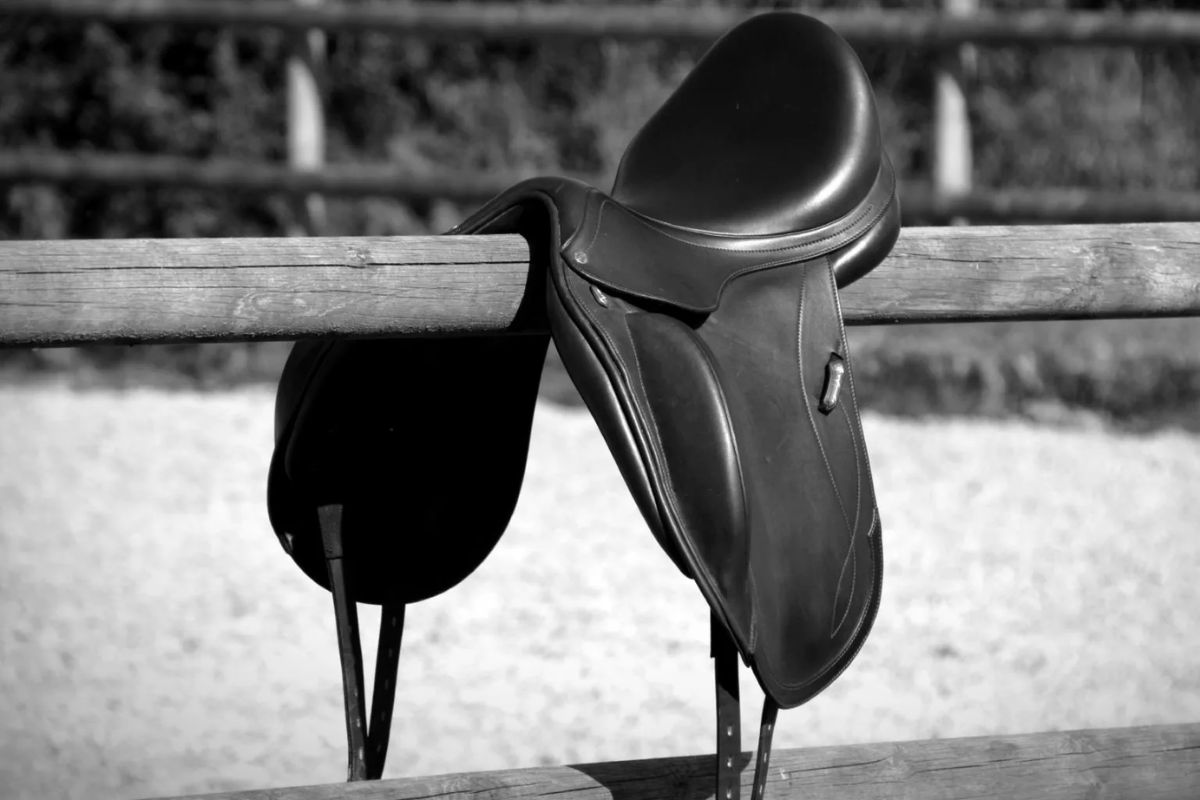
Far too many horses are walking around with an incorrectly fitted saddle. It's both a pity and a serious problem as the saddle, as we know, has a significant influence on the horse's ability to perform and, not least, to maintain its role as a riding horse for many years. We cannot stress enough that only a saddler is equipped to assess whether a saddle is fitted correctly. However, you can do a lot to figure out whether it sits poorly or not on your horse, and whether you should reach out to a professional. Here we go through the anatomy of the saddle and give you 8 simple tests you can easily perform to check it.
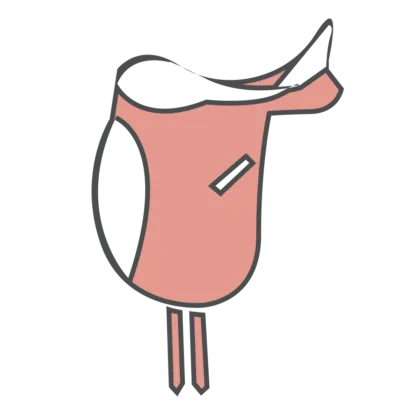
The basic skeleton itself is called the tree. The tree is designed to effectively distribute the rider's weight to the supportive part of the horse's back. There are two different types of trees. The flexible trees are made of laminated wood and spring steel. And then there are the fixed trees, which are cast in plastic or fibreglass. The dimensions and shape of the tree are crucial for whether your saddle fits your horse – and you. On the underside of the saddle are the panels. They connect the tree to
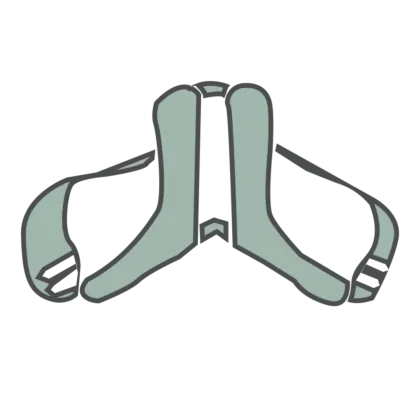
the horse's back and must fit the shape of the horse. At the front is the pommel, which must fit the size of your horse's withers and shoulder slope. At the bottom hang the girth straps, which secure the saddle on the underside of your horse with a girth. The girth straps also have a significant influence on whether the saddle is positioned correctly and whether it slides forward or backward.
Do you feel that it is difficult to maintain balance in the saddle, and do you feel that you are about to tip either forwards or backwards? Or does your horse have difficulty engaging its hind legs? It could be a sign that your saddle is not balanced. If your saddle is too high at the front or too low at the back, it will result in significant pressure on the horse's lumbar, the back ribs and/or its shoulders. Many people who ride with saddles that are too high at the front will find themselves sitting in a 'chair seat', because their legs slide forward and upper body backward. If the saddle, on the other hand, is too low at the front, you will find that the saddle slides forward, and you will end up sitting in a forward-bent position. If your saddle has this problem, it can end up pinching the horse's shoulders, which also limits its mobility.
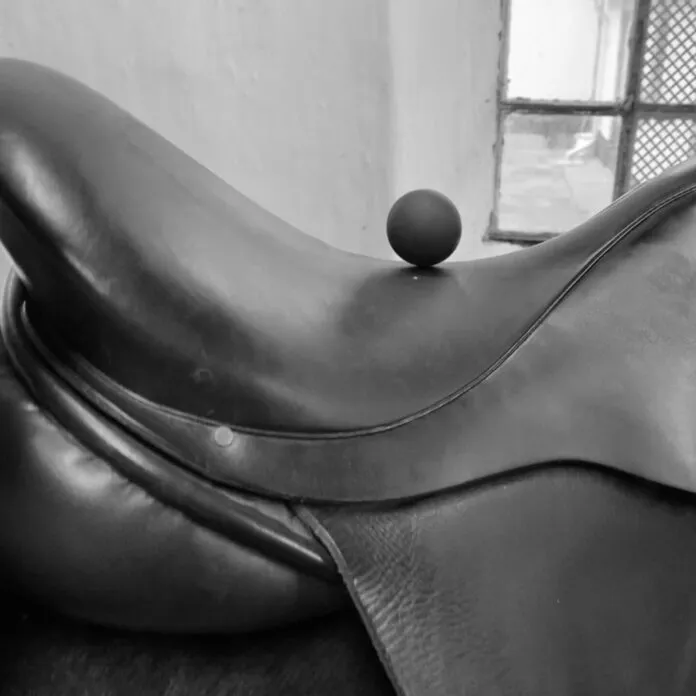
• Place the saddle (without padding) on the horse's withers.
• Let it slide down to the place where it falls 'into place'.
• Take a table tennis ball or something round and put it on top of the seat. If the saddle is balanced, the ball will roll down and rest on the deepest point, which should be in the middle of the saddle.
The point of the test is to check if the ball settles in the middle of the saddle. If it does, then the saddle is balanced.
Is your horse reluctant to move forward? Does it have areas with white hairs or strange bumps at the withers? Most riders know that you should have a minimum of three fingers on edge in the chamber. But what many forget is that there should also be plenty of room on the sides of the withers and all the way down through the chamber. The reason is simple: When the horse moves, the shoulder blade rotates upwards and backwards. If there is too little space at the front, the horse cannot make this shoulder rotation.
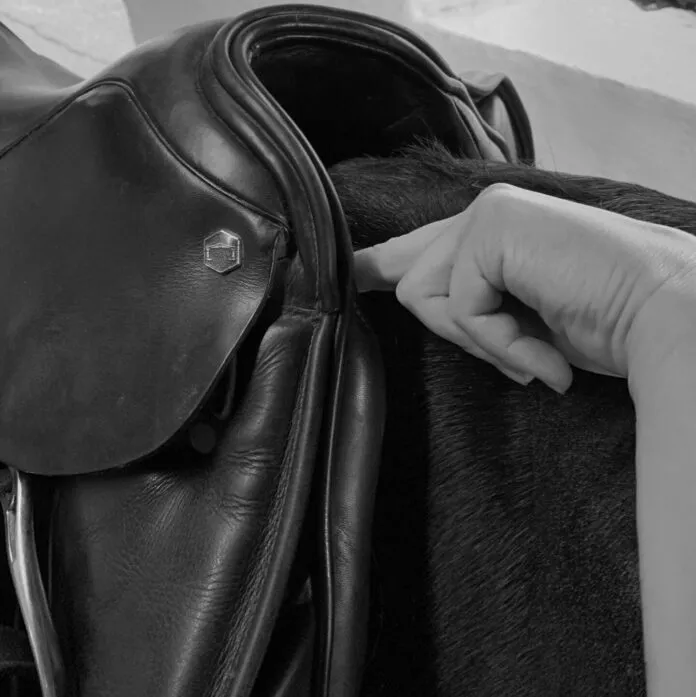
• Place the saddle (without a pad) on the horse's withers.
• Let it slide down to the point where it 'clicks'.
• Stand on a stool and look into the gullet. Notice the point where the inner pads start on the saddle.
• A fitted saddle has room for 2-3 fingers on each side of the gullet above the point where the pads start.
Here is a saddle with room for 2-3 fingers on the side of the withers just before the internal pads begin.
Read also: Study: Why half pads underneath the saddle can be effective
Does your horse find it difficult to round itself, and would it rather tilt its head? Or does it lack resilience? It could be because the saddle tree is too narrow. The saddle tree should provide space for the horse's spine and the ligaments in the back, which must be free for the horse to work correctly through the body. The size of the tree depends on how wide a spine your horse has.
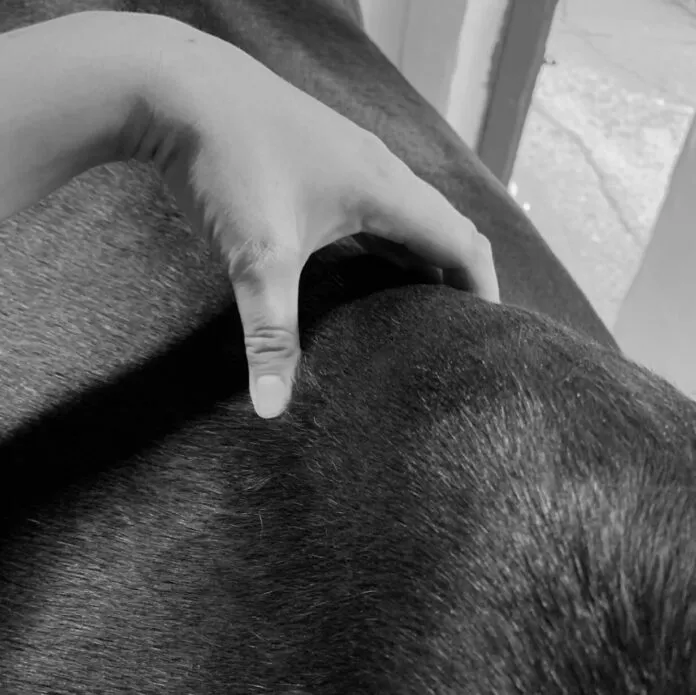
• Stand on the left side of your horse and place your hands on its spine.
• Gently press with your fingers and let your fingers slide slowly vertically down from the spine. First, you will feel bones (lumbar vertebrae), then something tough (the supraspinatus tendon, which moves the shoulder) and finally a softer area. This is the horse's back or longissimus dorci muscle.
• Make a mark to indicate the transition between the spine and muscles.
• Repeat the process on the right side.
• Then take your right hand and use it to form a bridge over the spine from mark to mark.
• Now take your left hand and place it horizontally under your right hand.
See how many fingers you can have inside the arc. This is the ideal width of your horse's saddle tree.
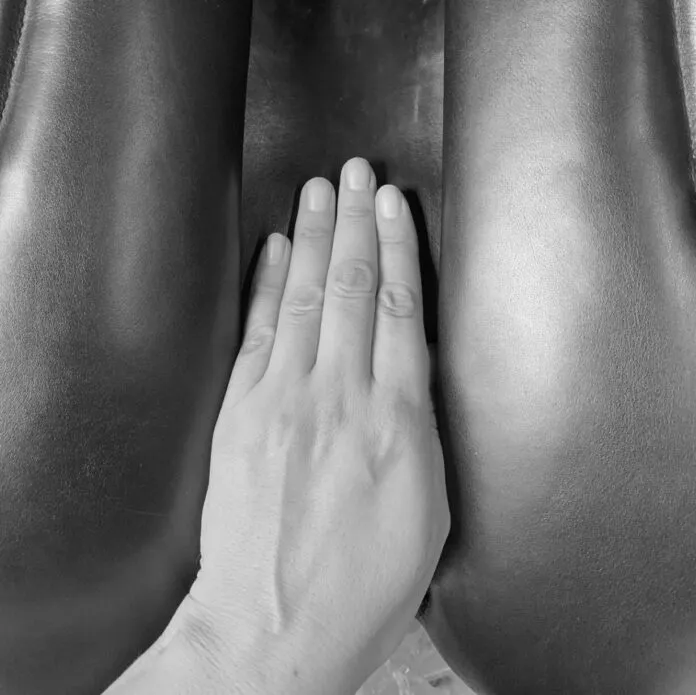
When you have made an arc over the spine with one hand, take the other hand and place horizontally in the arc. This gives you an idea of how wide a tree your horse needs.
It is also important that the tree is the same width all the way down. You test this by letting your hand slide flat down through the tree. There should be room for it all the way.
The next thing you need to check is whether the internal pads rest on your horse's longissimus dorci muscles and not on its spine or ligaments. The internal pads should align with the horse's musculature. This is very important because this is where the rider's weight should be distributed. The area that the rider's weight should be distributed on corresponds to only about 24 cm2, which is not very much. Therefore, it goes without saying that the saddle should fit properly.
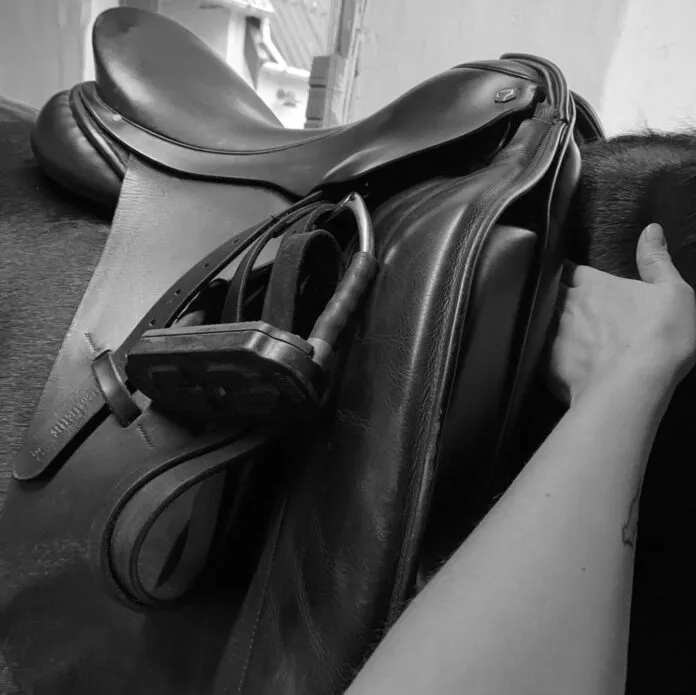
• Place the saddle (without a pad) on the horse's withers.
• Let it slide down to the point where it 'clicks'.
• Take your right hand and place it flat under the saddle.
• Place your left hand on top of the saddle and press down while slowly letting your right hand slide down along the back under the pads.
Do you feel any places where the saddle does not have contact with your hand?
When you let your hand slide down under the saddle, it is important to feel for so-called air holes, where the saddle's panels do not have contact with the back.
Read also (sponsored): Bates Saddles announced as Official Partner of the German Equestrian Federation
Does your saddle slide forward, no matter which girth you use? And do you have to cross the girth straps to get the saddle to stay in place? Then it could be the girth straps causing the problem. If they are not positioned correctly, they will affect the saddle's placement on the back. It may slide forward and press on the shoulders. A saddle resting on the shoulders restricts the horse's movements.
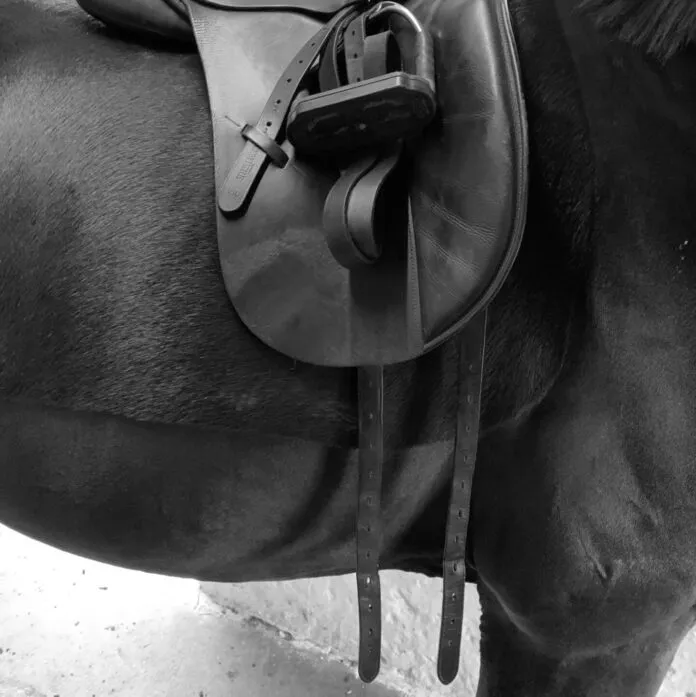
• Place the saddle (without a pad) on the horse's withers.
• Let it slide down to the point where it 'clicks'.
• Note the position of the girth straps. They should hang in front of the girth groove and be of equal length.
• If they hang too far back in relation to the girth groove, the saddle will slide forward and end up on the shoulders.
• If they hang too far forward in relation to the girth groove, the saddle will slide too far back, and the horse may risk getting sore elbows.
The girth straps should be of equal length and be positioned according to the horse's girth groove. Always buckle them in a parallel pair of holes unless advised differently by your saddler.
Does your horse tend to have a four-beat canter? And does it have tension in its back muscles? Many of us are familiar with horses with long or short backs. But the length of the back doesn't necessarily have anything to do with whether your horse should have a big or small saddle. The size of the saddle actually depends on the size of its saddle area. Breeds that often have a short saddle area include Friesians, Icelandics, PRE horses, Arabians, and many modern types of warmblood horses. A common saddle fitting problem that many of these breeds face is that the panels on saddles are too long for their backs.
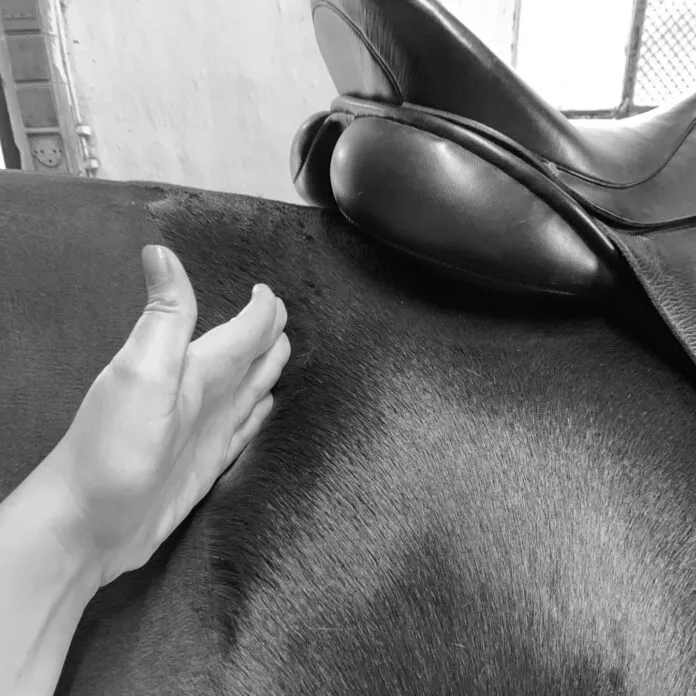
• Find the shoulder blade and mark it with a piece of chalk or similar.
• Also find the last rib. You do this by finding the spot where its hair gathers at the flank and draw a line straight up to the spine.
• The saddle should be about two fingers behind the shoulder and must not end behind the place where the last rib attaches to the spine. You find the point by running your flat hand up along the last rib. If the saddle is behind the last bearing rib, you will find that the horse cannot use its back optimally, and there may be tenderness in its back.
Read also: The horse’s back is a hotspot for pain
You may know the feeling of having to stop in the middle of your dressage lesson and step down in the inside stirrup because you feel you are sitting skewed. This can be due to the chamber not being placed directly over the horse's spine. A saddle that falls to one side can lead to problems with your horse's SI joint. The SI joint is also called the sacroiliac joint and is the joint that connects the pelvis with the sacrum and through it the rest of the spine. In other words, it is the joint that connects the hindquarters (the engine) to the back and to the forequarters.
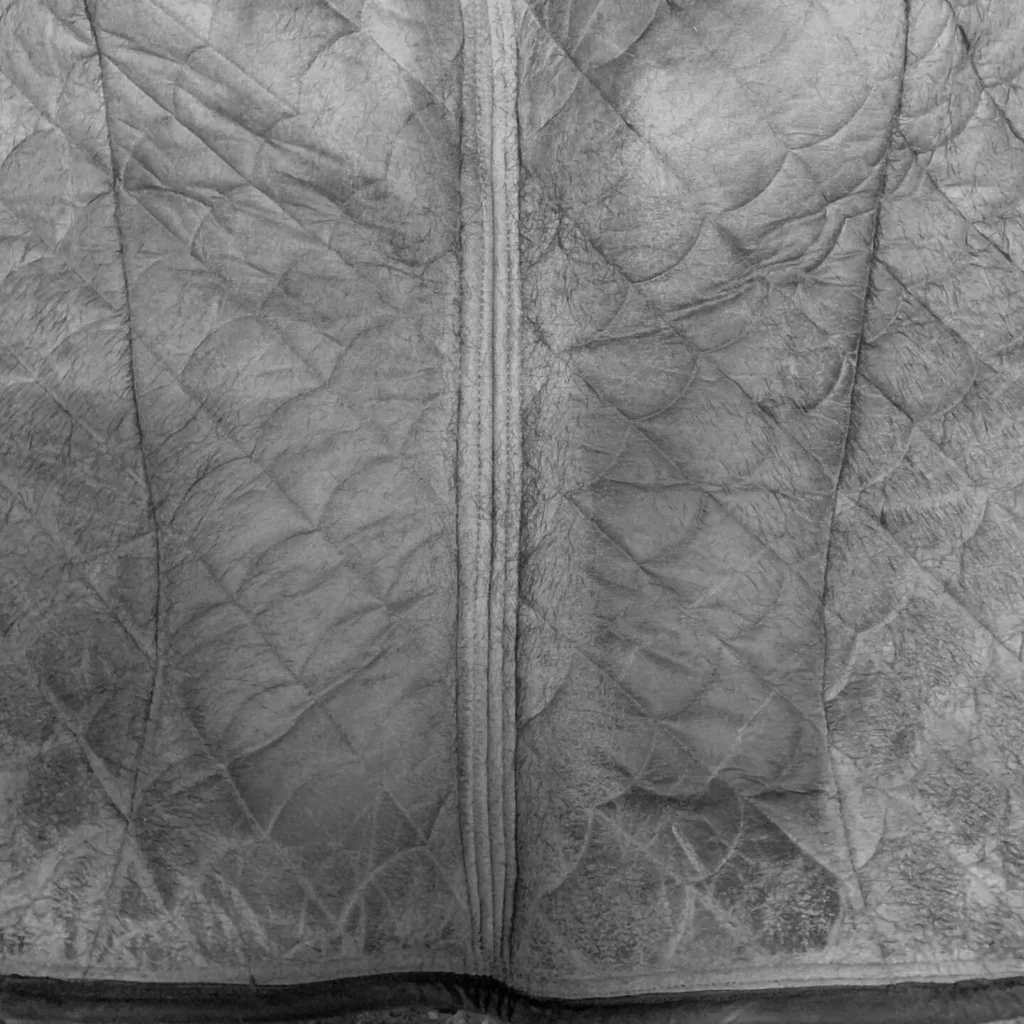
• You can check the underlay after a riding trip. Is there the same amount of sweat/dirt on one side as on the other?
• You can also stand on a stool behind your horse and see if the saddle has left the same marks in the fur on each side. Here is an underlay that has been turned over. The observant reader will notice that there is a difference in the saddle's contact surface from right to left. Right in this case is significantly smaller. This is because the horse is less muscular on this side.
Read also: Comprehensive guide: How to choose the right girth
As we have mentioned, the horse's shoulder moves up and backwards when it moves. This requires the saddles to provide ample space for the shoulders and their rotation. Many saddlers use saddle trees to measure the gullet width and angle so there is enough room for the shoulders. But you can also check at home in the stable whether there is enough room for your horse's shoulders under the saddle.
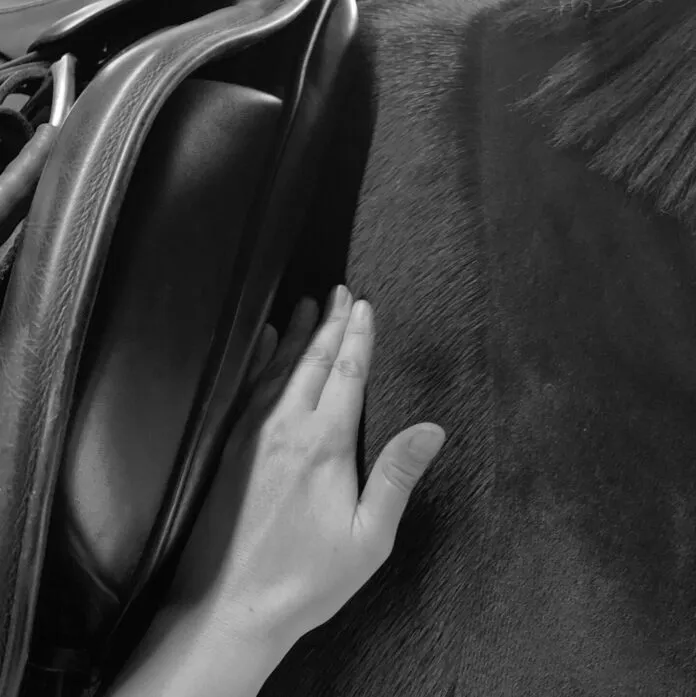
• To see how much the shoulder actually rotates, you should place the saddle (without a pad) on the horse's back.
• Then get someone else to lift the horse's leg while you hold your fingers at the shoulder blade.
• You will quickly feel how much the shoulder blade moves upward and forward.
• Check if the saddle stays in place so the shoulder continues to be free while there is space on both sides of the lance mark. This is how you can tell if there is shoulder freedom.
The shoulder should be free for the horse to move optimally. Far too many horses unfortunately do not have optimal shoulder freedom because their saddles slide too far forward and inhibit their movements.
We hope you have become more knowledgeable about whether your saddle fits your horse. If you are the slightest in doubt, we always recommend that you contact your saddler.